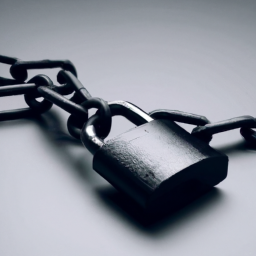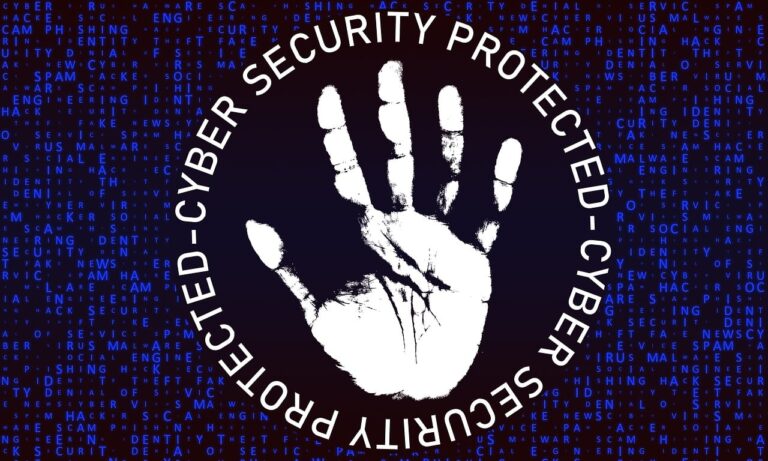How Does Tokenization Secure Sensitive Data?
Are you concerned about the security of your sensitive data? In today’s digital age, data breaches have become all too common, leaving individuals and businesses vulnerable to identity theft and financial fraud. One powerful solution to this problem is tokenization. But what exactly is tokenization and how does it secure sensitive data? Let’s explore this innovative technology that is revolutionizing data protection.
What is tokenization?
Definition of tokenization
Tokenization is a data security technique that involves replacing sensitive data with unique tokens. These tokens serve as placeholders for the original data, ensuring that the sensitive information is not exposed or accessible to unauthorized individuals. Tokenization is widely used to protect data in various industries, including finance, healthcare, and e-commerce.
How tokenization works
Tokenization works by taking sensitive data, such as credit card numbers, social security numbers, or patient records, and substituting them with tokens. These tokens are randomly generated and have no mathematical or logical relationship to the original data, making them extremely difficult to reverse engineer. The process of tokenization typically involves three steps: identification of sensitive data, creation of tokens, and secure storage of the mapping between the tokens and the original data.
The role of tokens in securing sensitive data
Replacing sensitive data with tokens
The primary role of tokens in securing sensitive data is to replace the original data with a non-sensitive representation. By substituting sensitive information, such as credit card numbers or social security numbers, with tokens, the risk of exposing valuable data is significantly reduced. Tokens serve as placeholders that can be used for various purposes within an organization without the need for direct access to the original sensitive data.
Unique identification of tokens
Tokens are unique identifiers that act as a reference to the original sensitive data. Each token generated through tokenization is unique, ensuring that it cannot be linked back to the original data unless authorized. This uniqueness guarantees that even if tokens are intercepted or accessed by unauthorized individuals, they hold no value or meaning without the necessary mapping to the original data.
Tokenization versus encryption
While both tokenization and encryption aim to protect sensitive data, there are notable differences between the two. Encryption involves transforming data into an unreadable format using complex algorithms and keys. In contrast, tokenization replaces the sensitive data with tokens that have no mathematical relationship to the original information. Tokenization is considered more secure than encryption because even if an attacker gains access to the tokens, the original data remains inaccessible.
Tokenization as a PCI DSS compliance solution
Tokenization is widely adopted as a solution for Payment Card Industry Data Security Standard (PCI DSS) compliance. By replacing credit card numbers with tokens, organizations can reduce the scope of their compliance audits. Since the tokens have no value and are meaningless outside the tokenization system, the risks associated with storing cardholder data are drastically minimized, simplifying the compliance process.
Benefits of using tokenization for data security
Protection against data breaches
Tokenization provides robust protection against data breaches. Even if a malicious party gains access to the tokens, they are useless without the corresponding mapping to the original data. This layer of security significantly reduces the impact of data breaches, limiting the exposure of valuable and sensitive information.
Reduced scope of compliance audits
Using tokenization for data security can streamline compliance audits. By replacing sensitive data with tokens, organizations can reduce the scope of their compliance assessments. This can save time and resources by focusing the audits on the tokenization system instead of the entire infrastructure that handles sensitive data.
Seamless integration with existing systems
Tokenization can be seamlessly integrated into existing systems and processes. Implementing a tokenization solution does not require significant changes to an organization’s infrastructure or software applications. With proper integration, tokens can be used interchangeably with the original data, ensuring minimal disruption to day-to-day operations.
Increased customer trust
Tokenization enhances customer trust by minimizing the risk of exposure to sensitive data. Customer information, such as credit card numbers or personal identifiable information (PII), is replaced with tokens, making it less susceptible to theft or misuse. This increased level of data security can foster trust and confidence in the organization’s commitment to protecting customer information.
Ease of managing data retention policies
Tokenization simplifies the management of data retention policies. When it comes to retaining sensitive data, organizations often face legal and regulatory requirements. Tokenization allows organizations to retain the tokens while securely deleting or archiving the original sensitive data. This enables compliance with data retention policies without compromising data security.
Tokenization process and implementation
Identifying sensitive data
The first step in implementing tokenization is identifying the types of data that need to be tokenized. This involves analyzing the organization’s data inventory and understanding the data elements that are considered sensitive. Common examples include credit card numbers, social security numbers, bank account information, and medical records. By identifying sensitive data, organizations can tailor their tokenization efforts to focus on protecting the most critical information.
Choosing a tokenization solution
Selecting the right tokenization solution is crucial for successful implementation. Organizations should consider factors such as the scalability, performance, and security features of the solution. It is important to choose a solution that aligns with the organization’s specific needs and requirements. Working with a reputable vendor that has a proven track record in tokenization can also contribute to a successful implementation.
Token format and length
Determining the format and length of tokens is another critical aspect of tokenization implementation. Tokens should be designed in a way that eliminates any possibility of linking them back to the original sensitive data. They should also be of sufficient length to avoid being easily guessed or brute-forced. The token format and length should be carefully chosen to strike a balance between security and operational efficiency.
Token lifecycle management
Managing the lifecycle of tokens is essential for effective tokenization. Organizations need to establish processes for generating, using, and securely storing tokens. Tokens should be properly tracked and recorded to ensure accurate mapping to the original data. Additionally, organizations should define policies for token expiration and destruction to prevent any unauthorized use or exposure of sensitive data.
Tokenization key management
The management of tokenization keys plays a vital role in data security. Tokenization systems employ cryptographic keys to encrypt and decrypt sensitive data when generating and retrieving tokens. Therefore, protecting and managing these keys is crucial to prevent unauthorized access or misuse of the tokens. Organizations should establish robust key management practices, including secure storage, strong access controls, and regular key rotation.
Securing tokenization systems
Data center security
Securing the data centers that host tokenization systems is of utmost importance. Physical access control measures, such as biometric authentication and surveillance systems, should be implemented to prevent unauthorized access to the infrastructure. Data centers should also have proper environmental controls, backup power systems, and fire suppression mechanisms to ensure the continuous availability and safety of the tokenization systems.
Network and firewall protection
Tokenization systems rely on networks for communication between systems and applications. Implementing strong network security measures, such as firewalls, intrusion detection systems, and encryption protocols, can protect against unauthorized access and network vulnerabilities. Regular network monitoring and security audits are also essential to identify and mitigate any potential risks or breaches.
Secure token storage
The secure storage of tokens is critical for maintaining data security. Tokens should be stored in encrypted databases or secure vaults with access controls to prevent unauthorized viewing or retrieval. Proper backup mechanisms and disaster recovery plans should also be in place to protect against potential data loss or system failures.
Access controls and authentication
Implementing stringent access controls and strong authentication mechanisms is essential to secure tokenization systems. Only authorized personnel should have access to the tokenization environment, and access privileges should be regularly reviewed and revoked when necessary. Multi-factor authentication, strong passwords, and privileged access management solutions can strengthen the overall security posture of tokenization systems.
Regular security audits
Regular security audits and vulnerability assessments are crucial for maintaining the security of tokenization systems. By conducting periodic audits, organizations can identify and remediate any security flaws or weaknesses proactively. These audits should cover all aspects of the tokenization process, including the tokenization infrastructure, network environment, access controls, and data storage.
Challenges and limitations of tokenization
Tokenization of structured and unstructured data
Tokenization can be more challenging when dealing with unstructured data, such as free-text fields or narratives. The lack of a standardized format makes it difficult to identify and replace sensitive information accurately. Organizations may need to invest in advanced data classification and extraction technologies to ensure successful tokenization of unstructured data.
Tokenization in multi-cloud environments
Managing tokenization across multiple cloud environments can present challenges. Organizations must ensure consistent tokenization processes and security measures are implemented across different cloud providers. Coordination and alignment between cloud service providers and tokenization vendors are crucial to maintaining the security and integrity of tokenized data.
Compatibility with legacy systems
Tokenization implementation can be complicated when dealing with legacy systems that may not natively support tokenization. Integrating tokenization with legacy systems may require additional development work or the adoption of third-party solutions. Organizations should carefully assess the compatibility of their existing systems and consider the time and resources required for successful integration.
Initial implementation costs
Implementing tokenization can involve significant upfront costs. Organizations need to invest in tokenization solutions, infrastructure upgrades, and training for staff. The initial financial investment may deter some organizations from adopting tokenization. However, it is important to consider the long-term benefits and potential cost savings achieved through enhanced data security and reduced compliance risks.
Education and awareness about tokenization
Education and awareness about tokenization are essential for its successful implementation. Many organizations may be unfamiliar with tokenization as a data security method, leading to reluctance in adopting it. Proper training and communication initiatives should be in place to educate stakeholders, employees, and customers about the benefits and importance of tokenization in safeguarding sensitive data.
Tokenization use cases
Payment card industry
The payment card industry is a prime adopter of tokenization for data security. Tokenization ensures that credit card numbers and other payment-related information are replaced with tokens during transactions. This significantly reduces the risk of exposing sensitive cardholder data, making it harder for attackers to compromise payment systems or intercept valuable information.
Healthcare and medical records
In the healthcare industry, tokenization plays a crucial role in protecting sensitive patient information. With the increasing digitization of medical records, securing personal health information (PHI) is of utmost importance. Tokenization allows healthcare organizations to replace personal identifiers, such as social security numbers or patient IDs, with tokens, minimizing the risk of data breaches and unauthorized access to medical records.
Online transactions
Tokenization is widely used to secure online transactions and e-commerce platforms. By replacing credit card numbers with tokens, online merchants can ensure that customer payment information remains secure. This not only protects customers from potential fraud but also instills confidence in e-commerce platforms, encouraging more online transactions.
Personal identifiable information (PII)
Tokenization is also valuable for protecting personal identifiable information (PII) beyond payment card data. Sensitive information such as social security numbers, bank account details, and addresses can be tokenized to prevent unauthorized access and reduce the risk of identity theft. Tokenization helps organizations comply with data protection regulations and ensures customer privacy.
Tokenization in the blockchain
The blockchain technology, known for its immutability and decentralization, can greatly benefit from tokenization. By tokenizing assets, such as real estate or intellectual property rights, organizations can leverage blockchain’s transparency while still protecting the confidentiality of sensitive data. Tokenization in the blockchain allows for secure transactions and ownership tracking without exposing the underlying information to the public.
Comparison between tokenization and other data security methods
Tokenization vs. encryption
Tokenization and encryption are both methods used to protect sensitive data, but they differ in their approach. Encryption transforms data into unreadable ciphertext using mathematical algorithms and requires a corresponding decryption key to convert it back to its original form. Tokenization, on the other hand, substitutes sensitive data with random tokens that have no direct relationship to the original information. While encryption aims to keep the data secure during transmission or storage, tokenization focuses on replacing sensitive data to minimize the chances of exposure.
Tokenization vs. masking
Tokenization and masking are similar in that they both aim to protect sensitive data. However, they differ in the level of data obfuscation. Tokenization completely replaces the sensitive data with tokens, rendering the original information inaccessible. Masking, on the other hand, hides or partially obscures certain portions of the data, such as masking digits of a credit card number while keeping the other visible. Tokenization provides a higher level of security since the original data is completely removed and replaced.
Tokenization vs. data anonymization
Tokenization and data anonymization both aim to protect privacy. Data anonymization involves removing or modifying personally identifiable information (PII) in a way that makes it impossible to identify individuals. However, data anonymization generally retains the structure of the data, whereas tokenization replaces the original data with random tokens. Tokenization allows for the retention of data relationships and integrity, making it valuable for maintaining data usability while minimizing the risk of exposing personal information.
Legal and regulatory considerations
General Data Protection Regulation (GDPR)
Tokenization can help organizations meet the requirements of the General Data Protection Regulation (GDPR). By replacing sensitive data with tokens, organizations can minimize the risk of unauthorized access or exposure of personal data. However, organizations must ensure compliance with other aspects of GDPR, such as data subject rights and data protection impact assessments, in addition to implementing tokenization.
Data breach notification laws
Data breach notification laws require organizations to inform individuals or authorities when a data breach occurs that could result in harm or identity theft. Tokenization can play a role in reducing the severity of data breaches by rendering the tokens useless without the corresponding mapping to the original data. However, organizations must still comply with notification requirements and provide relevant information to affected individuals in the event of a breach.
Industry-specific regulations
Various industries have sector-specific regulations that govern data protection and privacy. For example, the financial industry has regulations such as the Gramm-Leach-Bliley Act (GLBA) and the Payment Card Industry Data Security Standard (PCI DSS). Tokenization can aid compliance with these regulations by reducing the scope of sensitive data and minimizing the risk of exposure.
Tokenization and international data transfers
When organizations transfer data across borders, they must ensure compliance with local data protection laws and regulations. Tokenization can offer a solution to safeguard data during international transfers. By tokenizing sensitive data, organizations can minimize the exposure of personal information while still being able to perform necessary business operations across borders. However, it is essential to ensure compliance with both the export and import regulations of the countries involved.
Future trends in tokenization
Increased adoption in various industries
As data breaches continue to pose significant threats to organizations, the adoption of tokenization is expected to increase across various industries. Organizations are recognizing the benefits of tokenization in reducing the risk of data breaches, enhancing data security, and simplifying compliance efforts. The use of tokenization is likely to expand beyond finance and healthcare sectors to industries such as retail, e-commerce, and government.
Advancements in tokenization technology
Advancements in tokenization technology are expected to enhance the overall effectiveness and efficiency of the tokenization process. These advancements may include improved token generation algorithms, increased scalability, and more seamless integration with existing systems. As tokenization technologies evolve, organizations can benefit from better security measures, faster processing speeds, and enhanced usability.
Integration with artificial intelligence and machine learning
The integration of tokenization with artificial intelligence (AI) and machine learning (ML) can further strengthen data security and privacy measures. AI and ML algorithms can analyze patterns and detect anomalies within tokenized data, helping organizations identify potential security threats and vulnerabilities. By leveraging AI and ML, organizations can proactively mitigate risks and enhance the overall effectiveness of tokenization strategies.
Tokenization in decentralized finance (DeFi)
Decentralized finance (DeFi) has grown rapidly, creating a need for robust data security measures. Tokenization can play a significant role in enhancing the security of DeFi platforms by replacing sensitive data, such as wallet addresses and transaction details, with tokens. This can not only protect user privacy but also ensure transparent yet secure transactions within the decentralized ecosystem.
In conclusion, tokenization is a powerful data security technique that offers a reliable means of protecting sensitive information. By replacing sensitive data with tokens, organizations can significantly reduce the risk of data breaches, enhance compliance with regulations, and build customer trust. While tokenization does have its challenges and limitations, its benefits in securing data across various industries are undeniable. As technology continues to evolve, tokenization is expected to play an increasingly crucial role in safeguarding sensitive data, both now and in the future.








